Acknowledging their loss is painful, but could celebrating animals that have vanished encourage us to protect wildlife in the modern world? Marketeer Matt Lindley explains how an extinct New Zealand bird sparked a new conversation on conservation
Like many who travel there, I went to New Zealand to experience its stunning natural beauty and unique wildlife. What really inspired me in the end, though, was its fauna from the past.
Before humans arrived on its shores, New Zealand was free of land mammals, which saw quite a few unusual species of animal evolve there. One was the giant moa bird, whose extinction around 600 years ago followed the arrival of Polynesian people to the islands.
Reading through a local guidebook, I spotted a small section mentioning the moa and its once thriving population. It struck me how exhilarating it would be to come across native creatures from previous centuries.
It struck me how exhilarating it would be to come across native creatures from previous centuries
Such ideas are usually restricted to the realms of science and Jurassic Park-esque fiction, with the world not quite ready to revive extinct species yet, but there are plenty which could yet join the extinct list.
At home in the UK we could even lose the iconic hedgehog due to its endangered status, and see it consigned to history with the likes of the Eurasian lynx and wolf. I realised that my thoughts on lost wildlife from a forgotten time might well be similar to how future generations will feel about the animals we were lucky enough to grow up with.
Now experiencing its sixth mass extinction, our planet says goodbye to species at a rate estimated to be between 1,000 and 10,000 times the natural background rate. That’s dozens of extinctions every day.
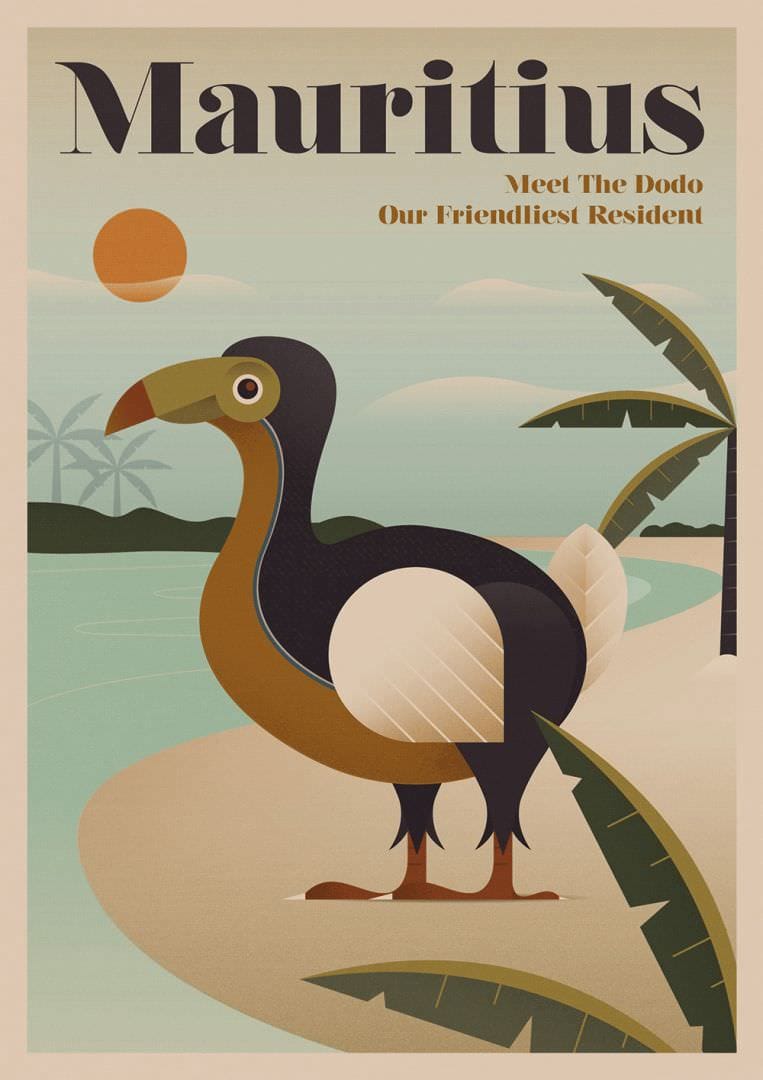
One of the posters from the Unknown Tourism collection. See the full set below
The past can stir empathy just as much as the present. To celebrate Black History Month in 2016, UK children’s charity Barnardo’s released a series of photographs of the many black children its staff have supported in its 150-year history.
The annual Remembrance Day for Lost Species is a chance to commemorate animals we have already lost, in order to reaffirm our commitment to protecting the ones we still have. The campaigns show us that both human and animal stories from the past can resonate and spur us toward action in the present.
Imagine what it would have been like to set foot in destinations during a time when these lost creatures still roamed the land and seas
By tapping into the scarcely known tale of the giant moa, and other extinct animals from around the world, I hoped that messages about conservation could gather momentum.
Commissioned by the travel site Expedia UK and illustrated by Jon Barmby, Unknown Tourism is a collection of vintage-style travel posters that urges us to imagine what it would have been like to set foot in destinations during a time when these lost creatures still roamed the land and seas.
By better considering what has been and gone before us, perhaps we can make more of a conscious effort to protect the animals disappearing from the planet at an alarming rate.
Back from the dead
Costa Rica: the golden toad
Despite its name, the golden toad was also spotted in orange, white, yellow, red and green colouring, as well as its natural gold. It was distributed across a small range, no more than 8km, in the high altitude of the mountains in Costa Rica. It died out in 1989 due to increased temperatures and decreased rainfalls causing the pools of water in which they bred to dry up.
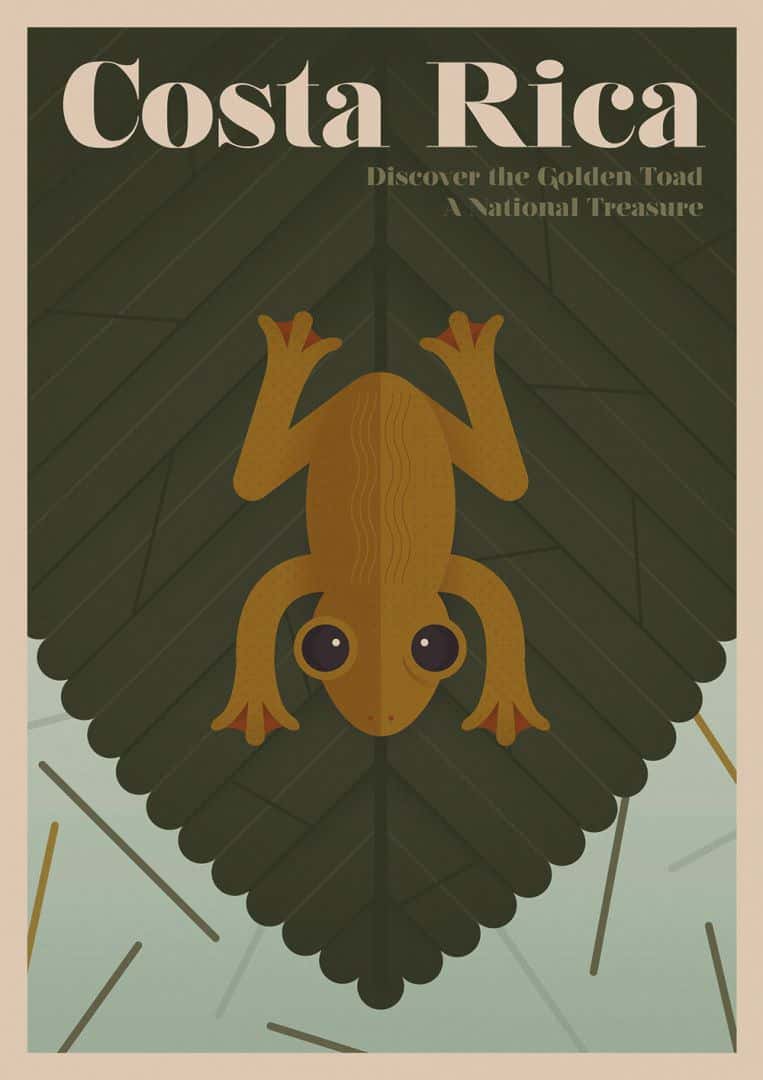
Mauritius: the dodo
A distant cousin of the common pigeon, the dodo evolved on Mauritius with a bountiful supply of food and no natural predators. This led to its friendly disposition and large proportions. Perhaps the most famous of all extinct animals, the dodo has become an iconic example of how human interaction can cause a species’ demise.

Tasmania: the thylacine
The thylacine is well known to antipodeans as it has long been the symbol of the island of Tasmania, featuring on their coat of arms, number plate, and as the official mascot of the cricket team. Able to extend their jaw to 80 degrees, the ‘Tasmanian Tiger’ was an apex predator of the Australasian continent until it was hunted to extinction in 1936.
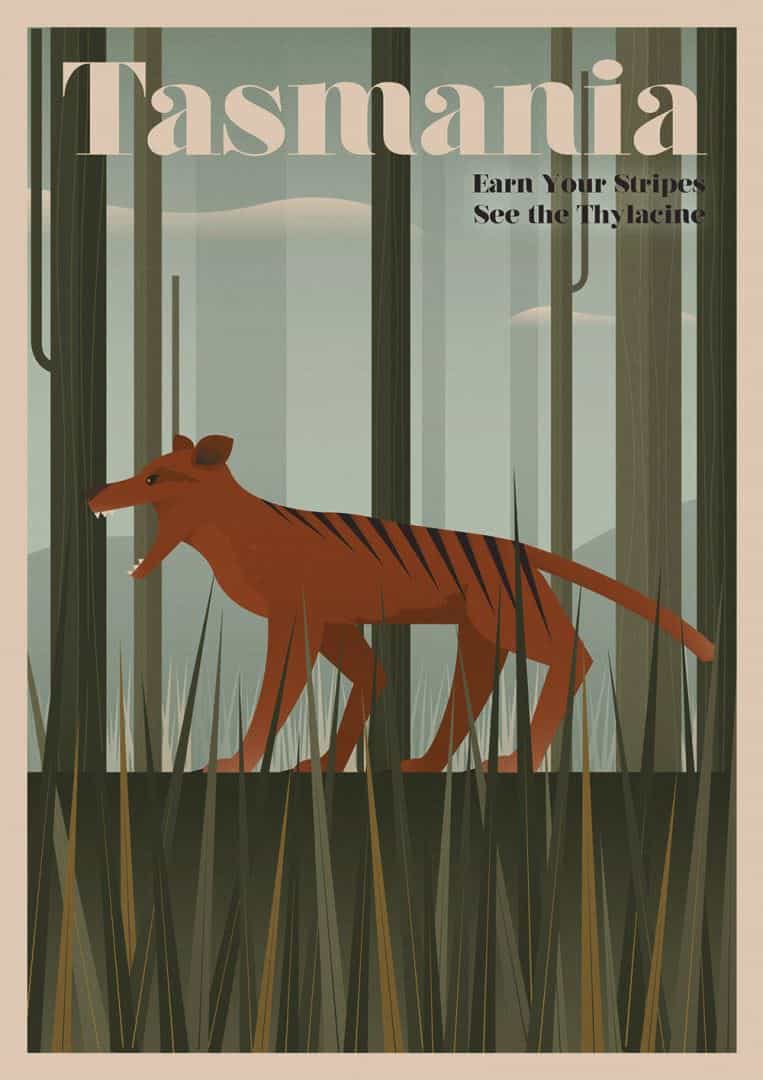
Jamaica: the giant galliwasp
The cold-blooded giant galliwasp would sun itself in the tropical heat of Jamaica, becoming one of the most iconic animals on the island due to its large size for a reptile – it grew to more than 60cm in length. When settlers arrived, bringing dogs, cats and mongooses, they upset the delicate balance of the island’s ecosystem, causing the death of the species.
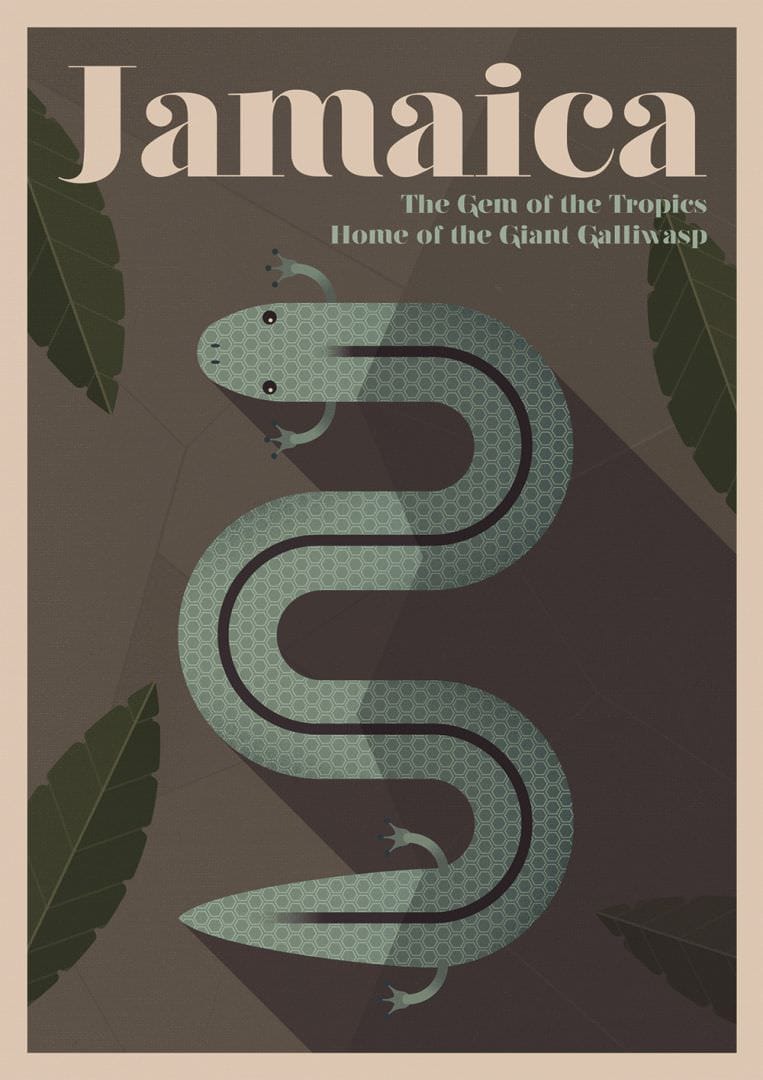
Alaska: Steller’s sea cow
Slow, steady and constantly grazing, the colossal Steller’s sea cows really were the bovine of the waves. Growing to a maximum length of 30 feet, and weighing 10 tonnes, at the time they were the largest water mammals besides whales. Declared extinct in 1768, their much smaller relatives the manatees can still be found in some parts of North America.
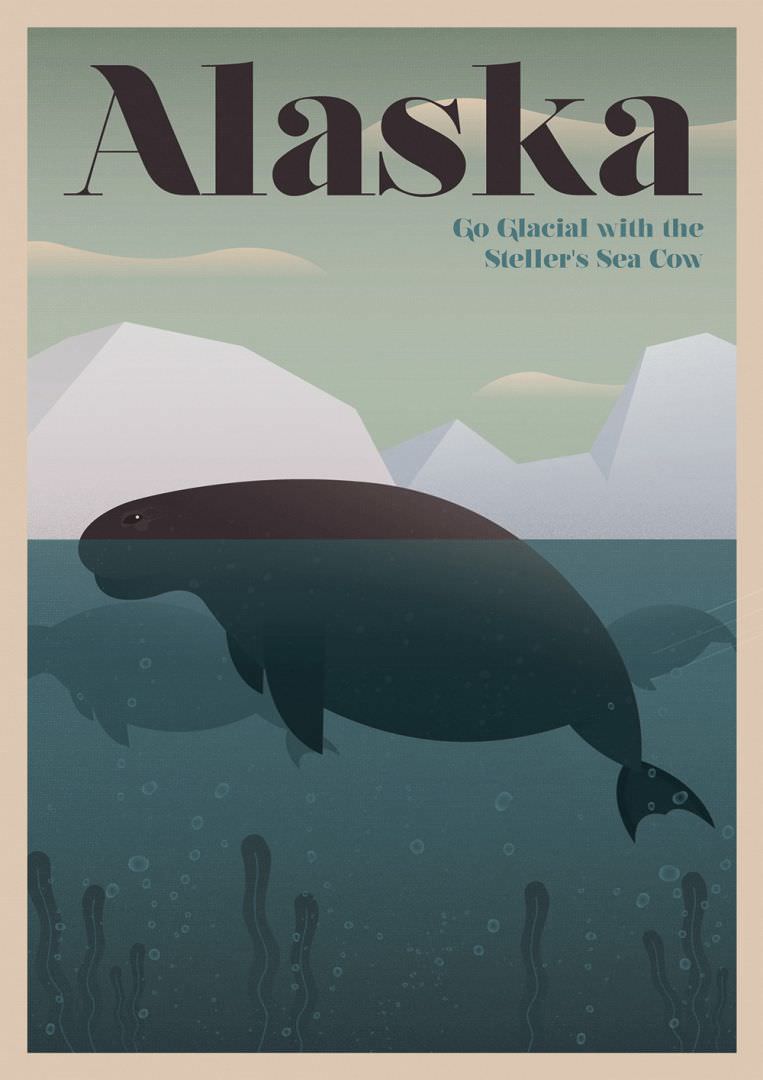
New Zealand: the moa
New Zealand has always been home to animals that are bigger than average – the island’s seclusion from the rest of the world meant that they developed what’s called ‘island gigantism’ – and the moa was certainly no exception. The bird could grow to a massive 12 feet and 230kg, much larger than its closest living relatives, the ostrich and emu.
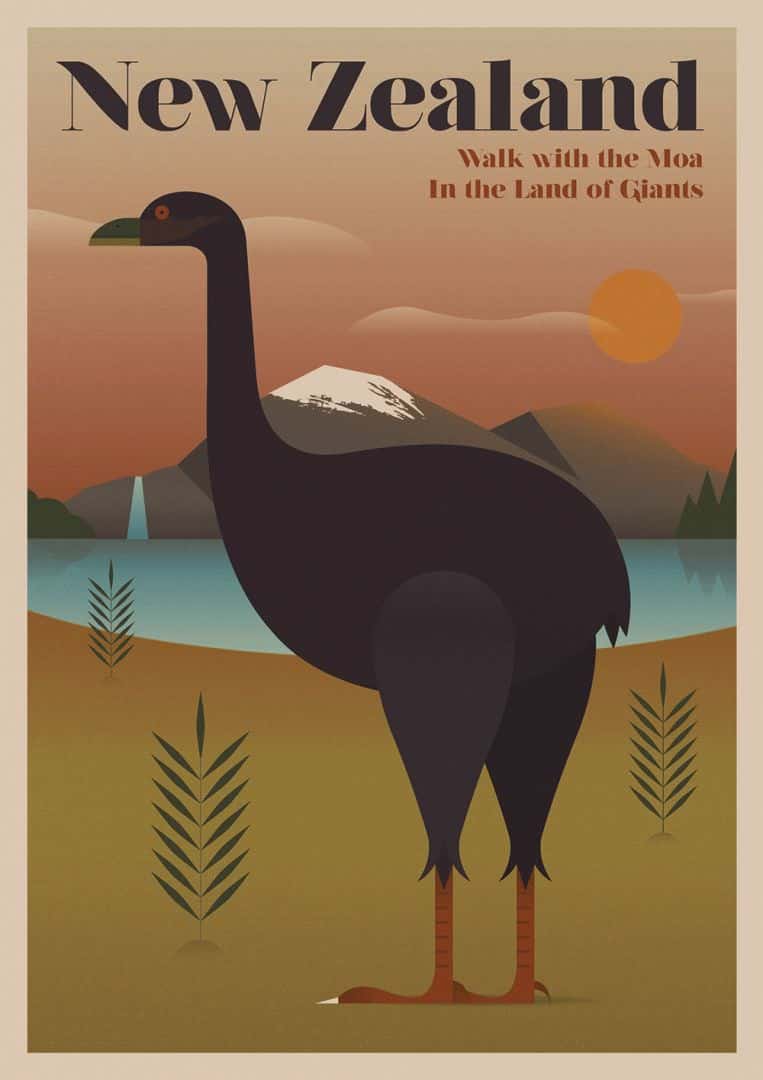
Illustrations: Jon Barmby
Reasons to support Positive News
#7: It’s beautiful and useful
We believe that news can be beautiful. That’s why our magazine isn’t only intelligent but also exquisitely designed. And, Positive News is a carbon neutral magazine printed to high environmental standards, so you can read it guilt-free.